Rocks and boulders are a friend to even the most novice of anglers. Why? Because rocks make it easy to read the water, a task that can be particularly challenging for beginners but also one that remains complex for even the most seasoned of fly fishers.
Big rocks form pools behind them where fish can shelter from even the stiffest of stream flows and pick food from the currents that slip by on other side. Rocks break and channel currents, creating seams of fast and slow water where trout congregate to feed. There's an intuitive sense that these rock-formed stream features should hold fish. It makes sense. The rocks both break up and concentrate flows, offering not only opportunities for shelter from brisk currents but a stab at a high density stream of river food.
But some of the most productive spots in the river, which exist solely thanks to the rocks that create them, are more seldom fished because -- to many anglers -- they are not imagined to be places of refuge, places of opportunity. These are the spots in front of rocks.
Our brains tell most of us something entirely different about these places in front of rocks: that they are inhospitable, possibly even uninhabitable locations within a river made so my the charging onslaught of heavy currents. So we don't look, we don't observe.
And at first this seems to make sense. When we wade into a heavy current, the river's flow slams against our legs and bodies. Anything that flows towards us in the river -- bugs, debris, our fly lines -- is swept, with haste, as it forks to either side of us, led by the current that our bodies have broken and accelerated. We look behind us, and the water is calm and serene, thanks to the refuge we've created in the current. But in front of us? Mayhem.
But reality can be deceiving, especially if you're letting your brain distract you from what your eyes can plainly see. Rocks, people and any other obstructions placed into a moving current most certainly create the kind of havoc described above, splitting and accelerating that current. That's the intuitive part. The part that isn't is where that split, that break, occurs. As observation reveals, it doesn't occur where the rushing water meets the rock, or your leg or other barrier. Rather, it occurs anywhere from a few inches to several feet in front of the obstruction. The spaces that exists in between the obstruction and that splitting current are some of the most productive feeding lies on any given stream.

These spaces are characterized by slow, soft water at the front of which is a conveyor belt of food. And these spaces are a favorite of trout. Once you look, these formerly counter-intuitive stream forms are painfully easy to see. Water rushing to meet a big boulder rebounds, pushing back upstream a bit. The mixing of the rushing current and the water rebounding off the boulder behind it forms an area of placid, serene water which is typically referred to as the hydraulic cushion.
Depending on the size of the boulder or other obstruction, these cushions can be big or small. Big rocks create big cushions, small rocks create small ones, but even the smallest cushions will often hold fish on streams with healthy trout populations.
These areas are often most easily fished from above, with a down-and-across or downstream approach. Almost any strategy will work, drifting dry flies or nymphs, swinging wet flies or streamers, you name it. Whatever strategy you employ, be sure to explore the spaces in front or rocks. You'll be glad you did.




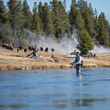






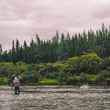
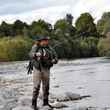



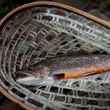
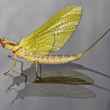



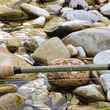
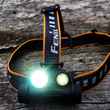




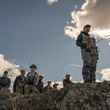

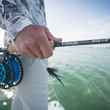
Comments
Ken Burnside replied on Permalink
This is a discovery I made (through reading, not on my own) just a few years ago, and it has become one of my favorite areas of the stream to target.
I like to swing streamers on a sink tip or poly leader right in front of the rock.
ginkthefly replied on Permalink
If the rock/boulder in question has some tree cover, then hold on!
PoconoTrout replied on Permalink
Do you feel that size of the stream plays a signifcant role in how often fish set up in front of rocks and such??
Chad Shmukler replied on Permalink
Yes. As with the note above that points out that big rocks create big cushions and small rocks create small cushions -- the same might be said of big and small rivers.
The reason is streamflow. Since bigger rivers tend to have bigger, heavier flows -- it stands to reason that more water rushing faster at a -- for instance -- a big river boulder, will rebound more significantly than slower, softer flows will and will thus create a bigger cushion.
So, in short -- size matters. Big flows and big obstructions cause big cushions, small flows and small obstructions create small cushions. Mix and match and get everything in between.
Pages